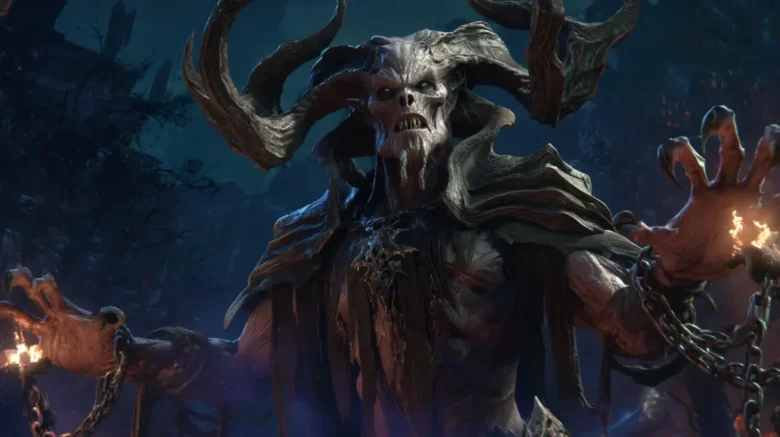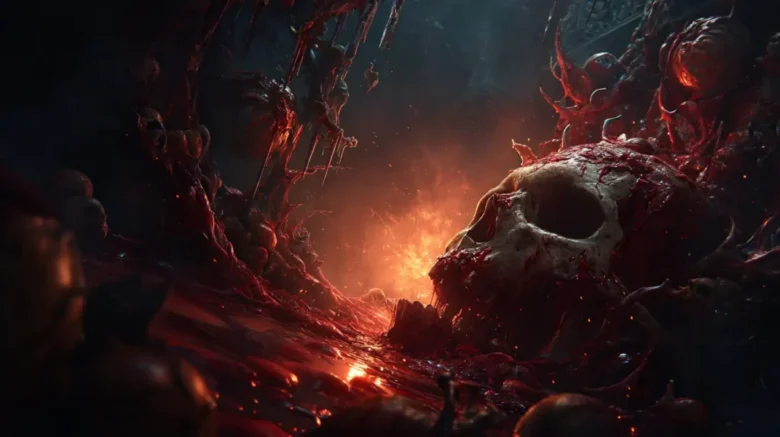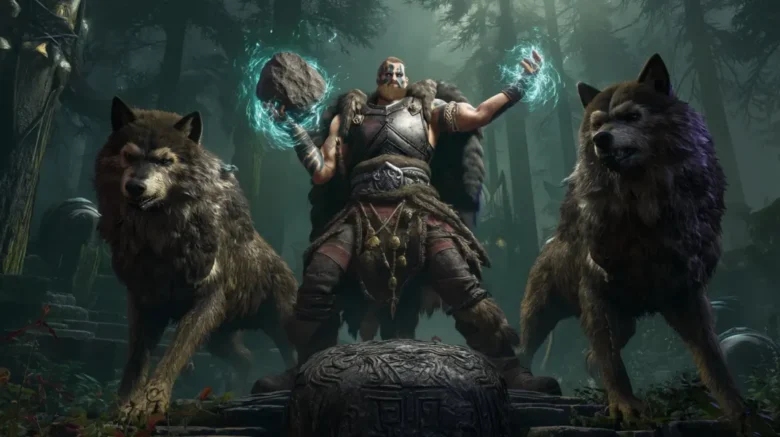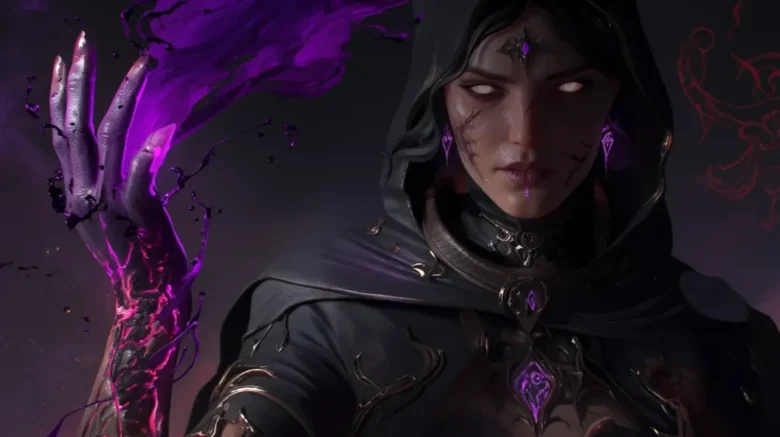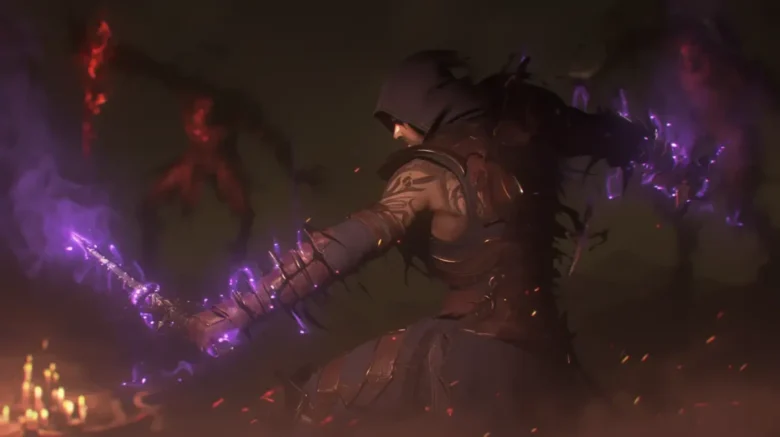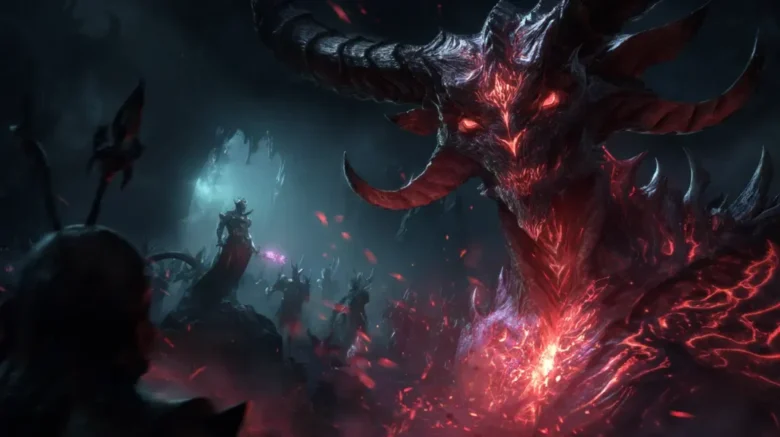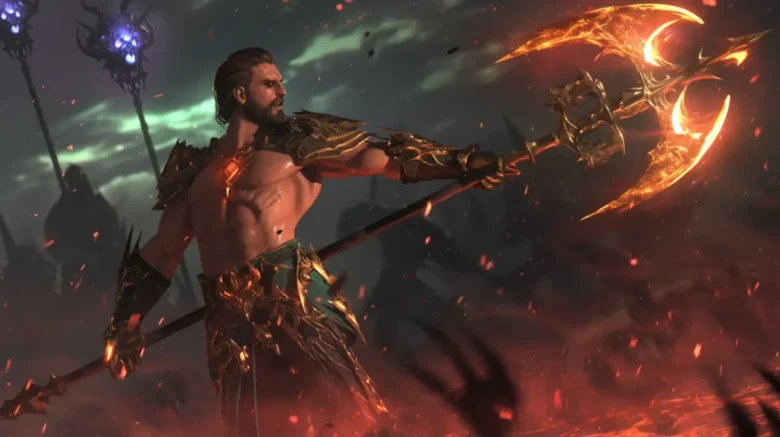The ARPG genre is at an interesting crossroads, with Diablo IV and Path of Exile 2 taking distinct approaches. If we put PoE 2 vs Diablo IV we’ll see that both revolve around loot-driven combat, but their skill systems, progression, and overall player experience set them apart. Let’s break down these differences—from PoE2’s deep and complex passive skill tree to Diablo IV’s more streamlined and accessible mechanics. Whether you’re a longtime ARPG fan or a new player curious about these two games, this comparison will help you figure out which one suits your playstyle best.
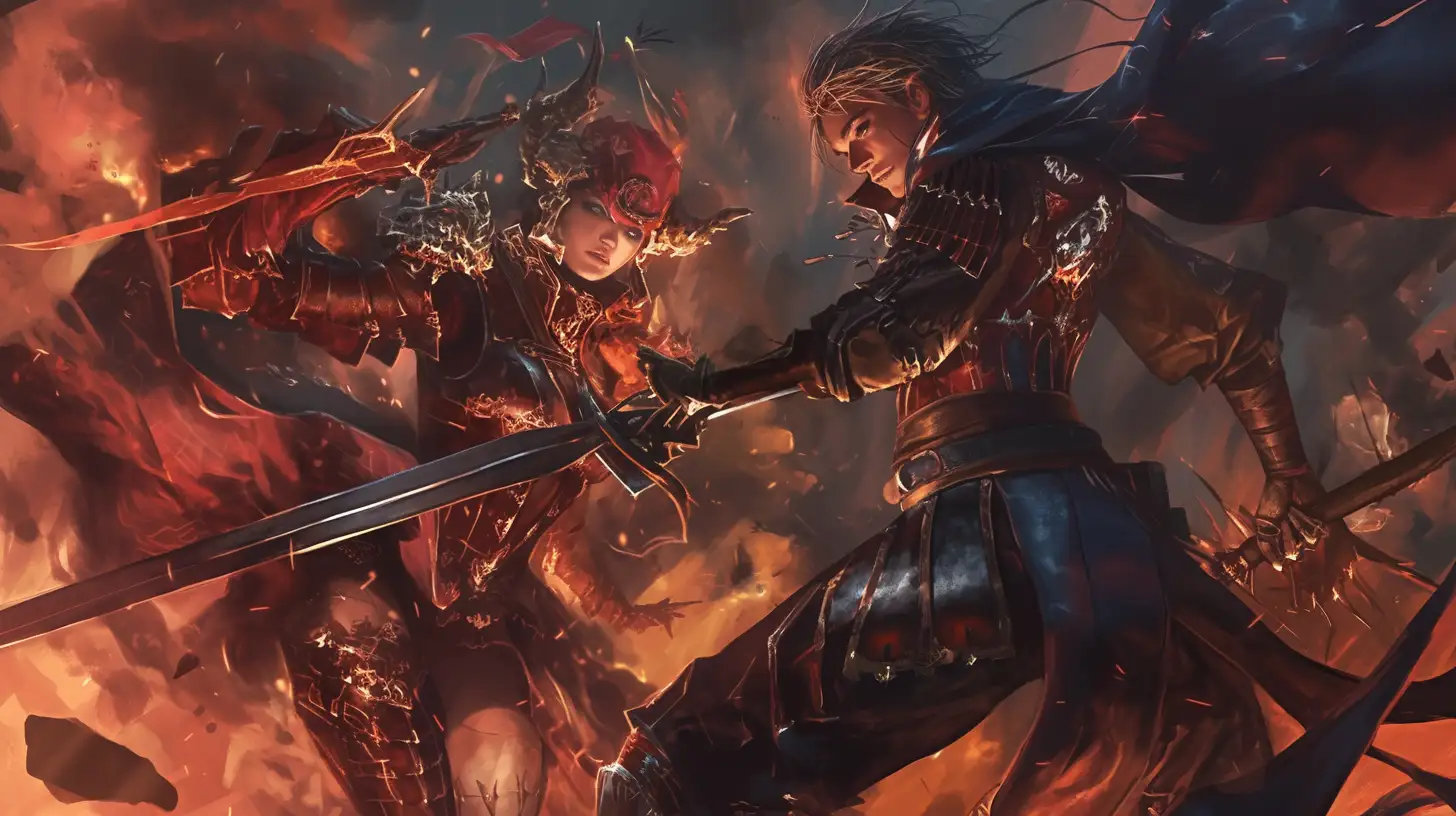
Which Game Offers the Most Satisfying Gameplay?
Skills
At first glance, Path of Exile 2’s skill system might look pretty familiar to Diablo IV players. Both games start you off with just a handful of skills, unlocking stronger ones as you progress. In PoE2, you get access to higher-tier skills by finding higher-level skill gems. In Diablo IV, you unlock them by investing points deeper into your class skill tree.
You might expect them to be nearly identical, but you’d be wrong. Turn off “Show Recommended” option, and suddenly PoE2 opens up a massive pool of support skills you didn’t even know existed. Then you realize you can click through other tabs in the skill menu, and boom—turns out Path of Exile 2 isn’t just giving you a limited class-based skill system. There are no class restrictions here. As long as you meet the attribute requirements, you can mix and match skills however you want. That alone pushes PoE2 far ahead in terms of flexibility.
But to be fair, Diablo IV’s skill system doesn’t stop at the tree of skills. You’ve also got Legendary Aspects, which add passive boosts to your abilities. Once you extract an aspect from a legendary item, it gets stored in your Codex of Power, letting you apply it to new gear later on.
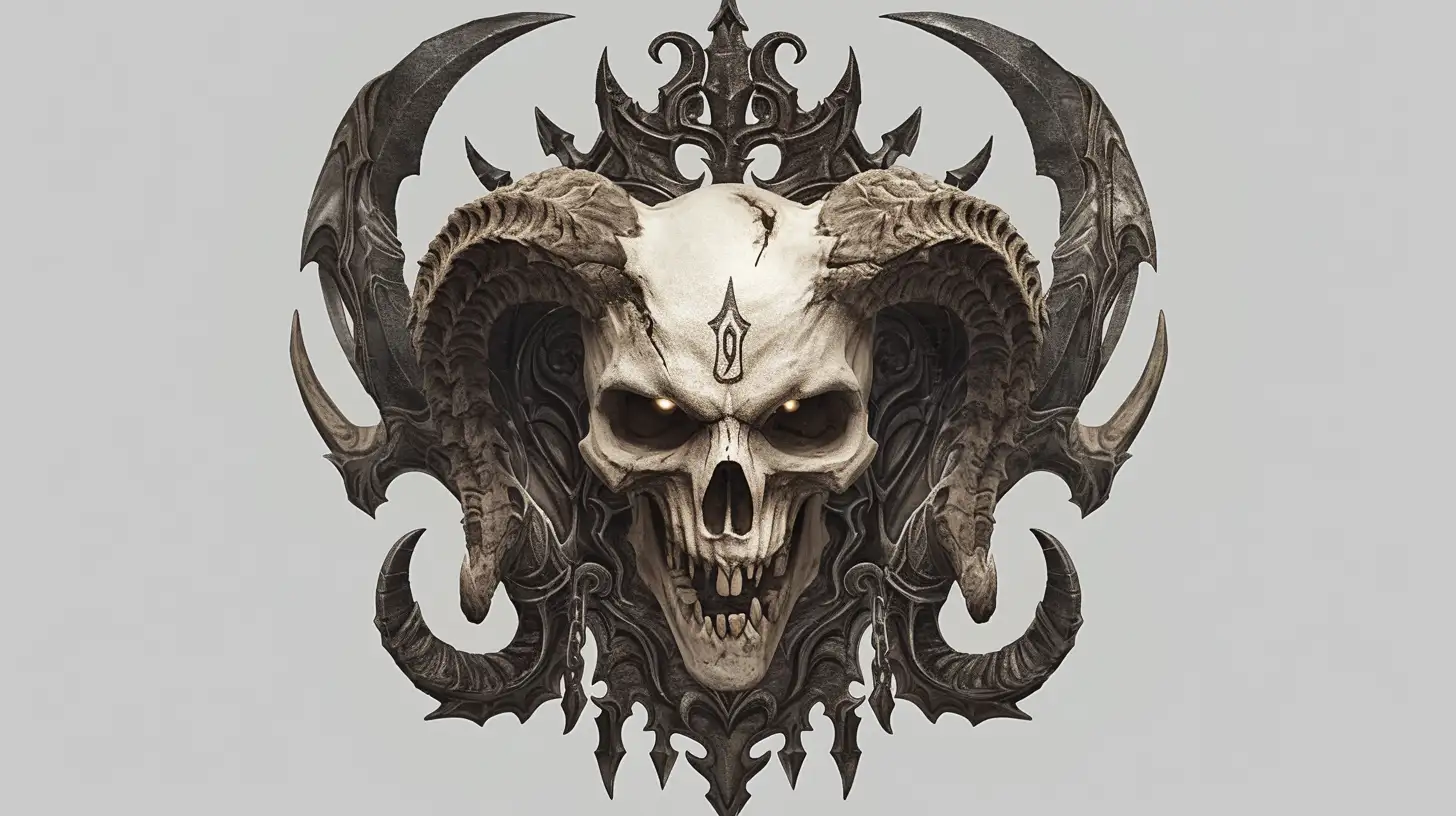
Does that put Diablo IV on the same level as Path of Exile 2 when it comes to build variety and skill customization? Not really. PoE2 still offers a ridiculous amount of depth that Diablo IV can’t quite match. Both games offer deep skill trees, but if you want more action, Path of Exile 2’s faster-paced ability interactions might be what you’re looking for.That said, Diablo IV does have more complexity than it usually gets credit for.
Passive Skill Tree
Path of Exile’s passive skill tree is infamous—either a genius masterpiece or an anxiety attack waiting to happen. It’s a sprawling web of interconnected upgrades that makes Diablo IV’s Paragon Board look like child’s play.
That said, if you’re coming from D4, don’t panic. At its core, both systems serve the same purpose: customizing your build through passive upgrades. The key difference? Diablo IV eases you in with class-specific boards that rotate and link together, adding layers of complexity over time. PoE, on the other hand, throws you straight into one massive, interconnected tree with no separate class paths or gimmicks—just pure, chaotic freedom.
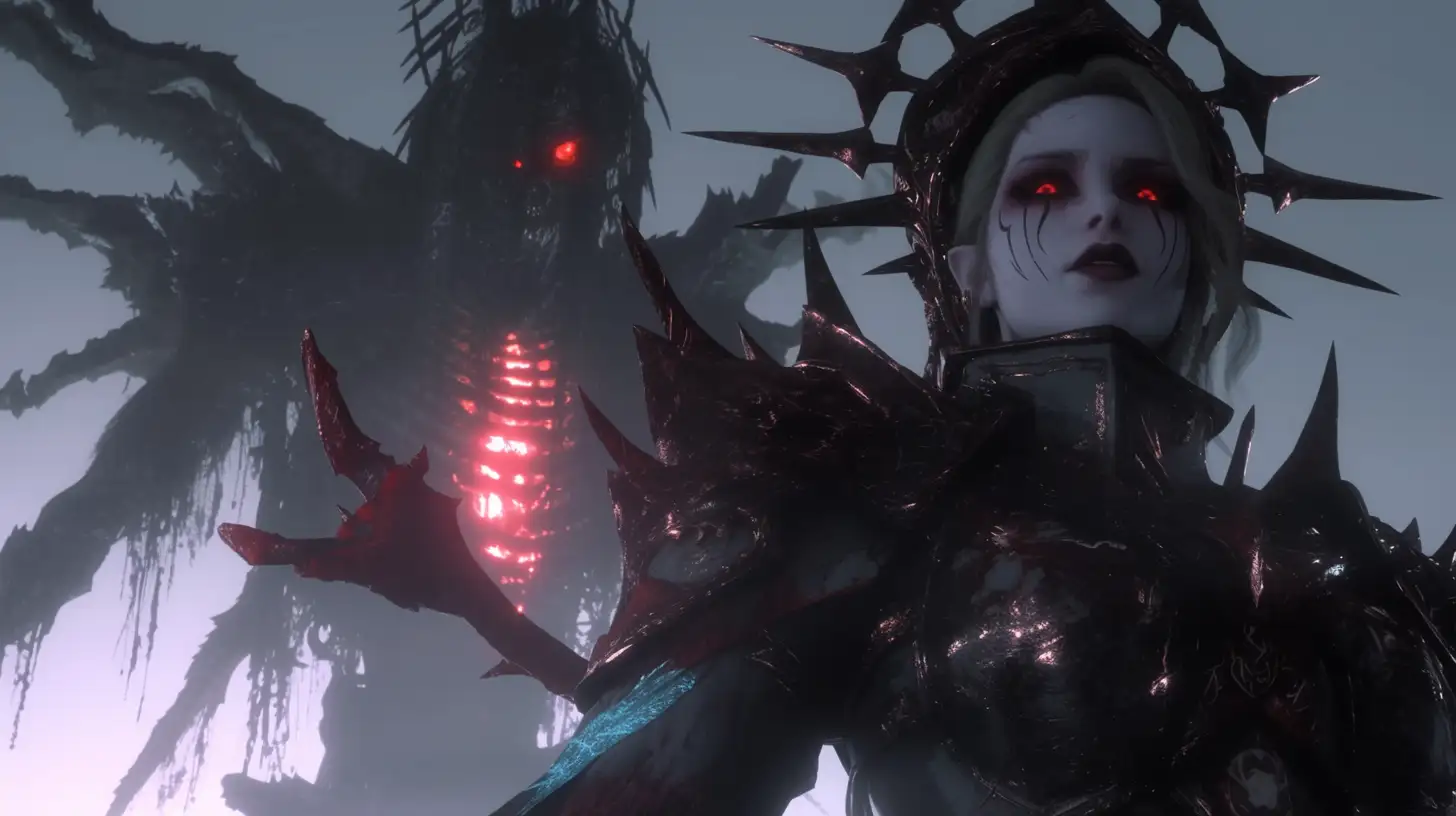
If Diablo IV’s Paragon Boards are structured like chess, PoE’s skill tree is 4D checkers, daring you to make sense of it.
Combat
Alright, let’s talk about combat, because let’s be real—if an ARPG doesn’t feel good to play, nothing else matters. Thankfully, both Diablo IV and Path of Exile 2 absolutely nail that modern, satisfying, chunky combat feel.
For me, weighty combat comes down to a few key things: smooth but intentional animations, a slight wind-up to really sell the force behind an attack, sound design that slaps, and, of course, enemies reacting like they just got wrecked. If you swing a giant axe into someone’s face and they don’t at least flinch, the whole thing starts feeling weirdly floaty.
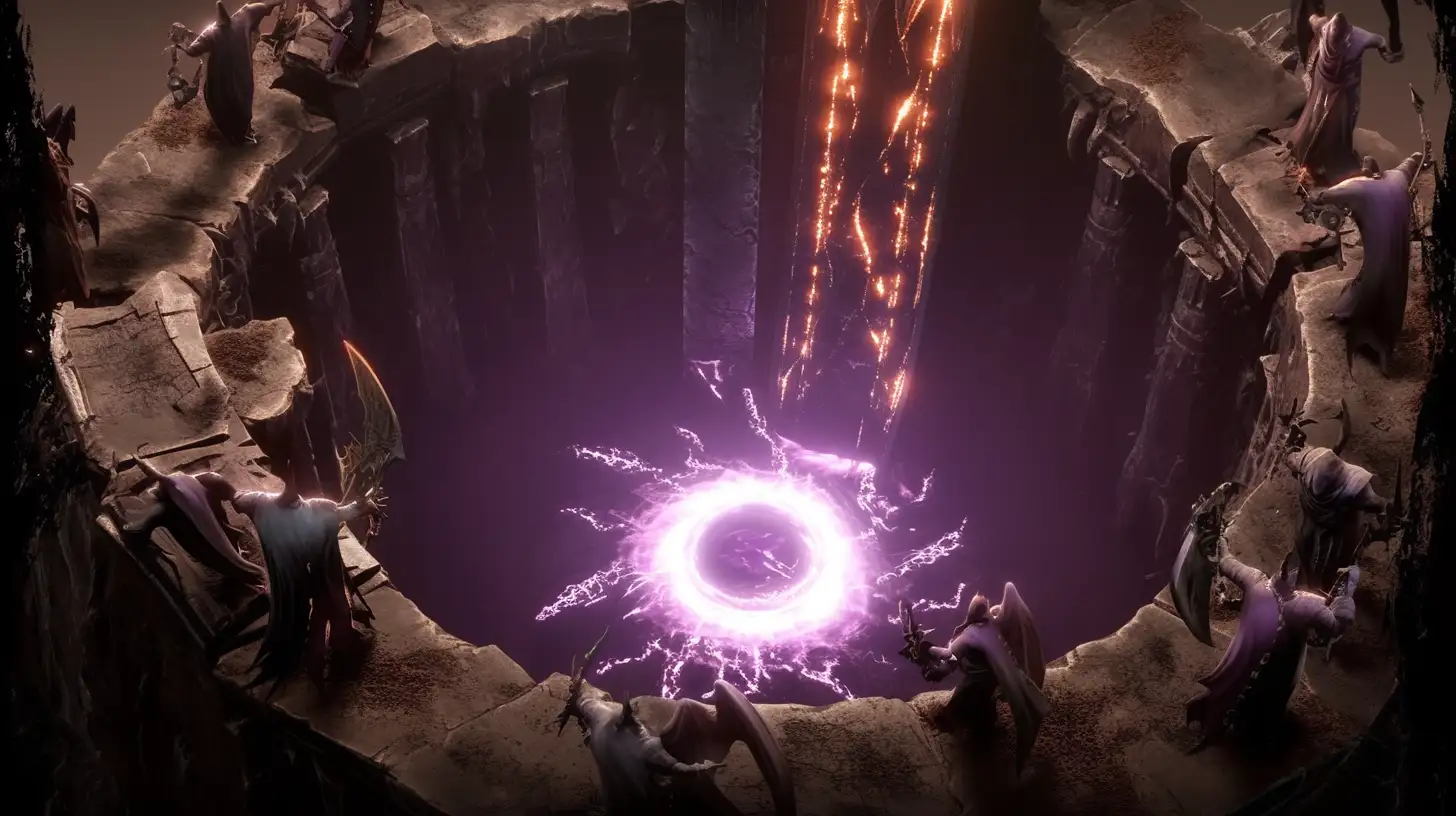
Both games do a solid job here. Some people like to argue that Diablo IV’s combat lacks impact, but honestly? Compared to majority of ARPGs, it does feel weighty. That said, PoE2 might have just taken it a step further, slowing things down just enough to make fights feel more tactical and deliberate.
Dodge Roll
Few things divide ARPG fans like the dodge roll. Some call it heresy, others a game-changer—but when done right, it makes combat feel incredible. The problem? Most ARPGs slap a cooldown on it.
In theory, this prevents spam. In practice, it leads to frustration—like dodging a boss attack only to realize, too late, that your dodge is on cooldown. Some games offer multiple charges (Diablo IV ties extras to boot buffs), but it’s still clunky.
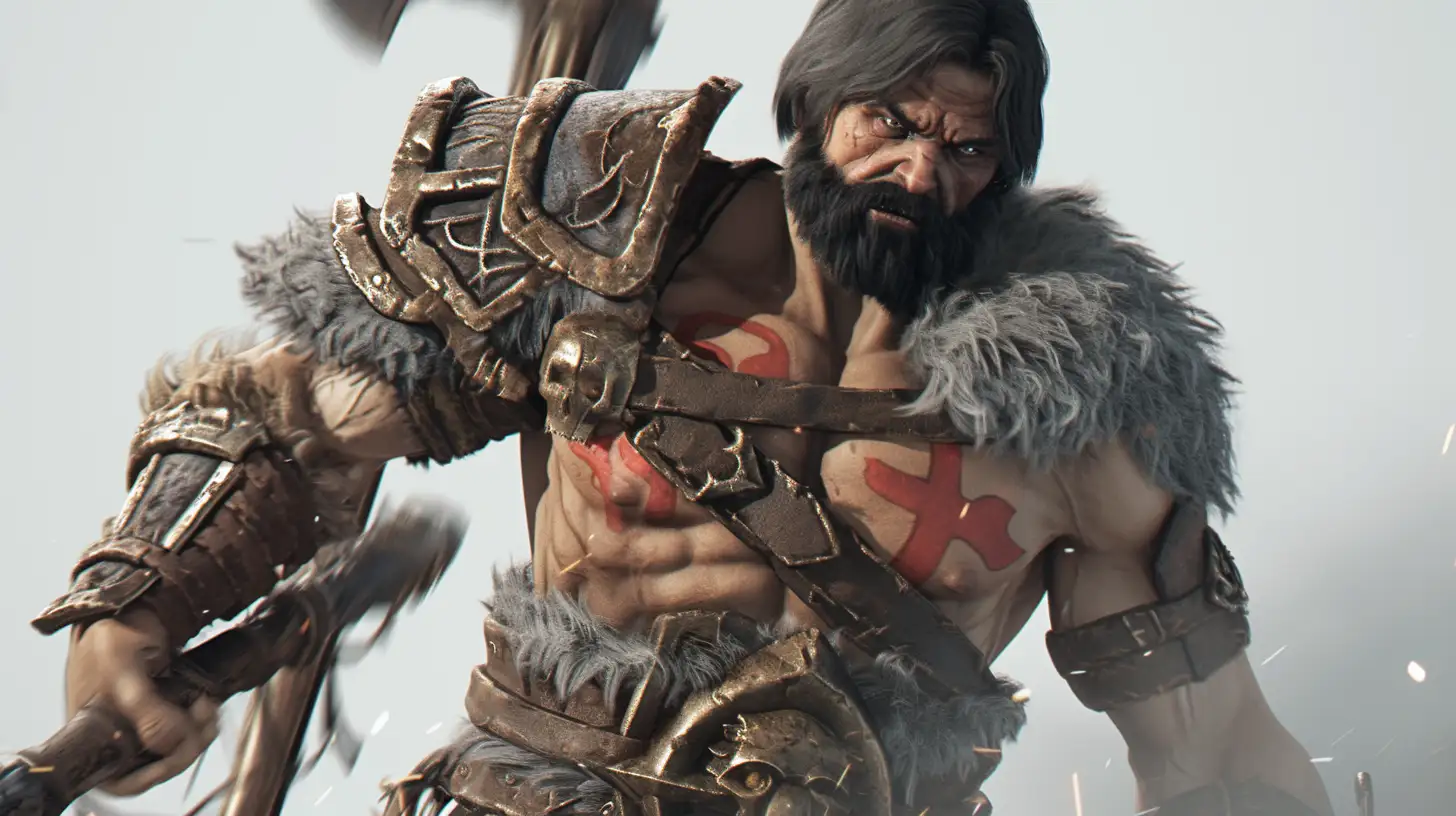
Path of Exile 2 fixes this by removing cooldowns entirely. Dodging is tied to its animation, so you can roll whenever needed. To prevent abuse, there’s a slight slowdown after dodging, making running better for distance but keeping dodge perfect for last-second escapes.
It’s simple, effective, and honestly? Kinda brilliant.
Itemization
Alright, let’s talk loot—because what’s an ARPG without that sweet gear grind?
In Diablo IV, every item has an Item Power rating, which is basically a quick-glance number telling you how strong it is. Simple, clear, easy to grasp. You see a bigger number? You equip the bigger number. Boom, progress.
Path of Exile 2 also has Item Levels, which kinda serve the same purpose, but PoE loves its complexity, so itemization here is more about trade-offs than just “Oh hey, bigger number = better.” Instead of pure, linear upgrades, you’re constantly making choices—do you want more raw damage, or maybe a stat tweak that synergizes just right with your build? It’s less about power creep and more about finding the right puzzle piece for your playstyle.
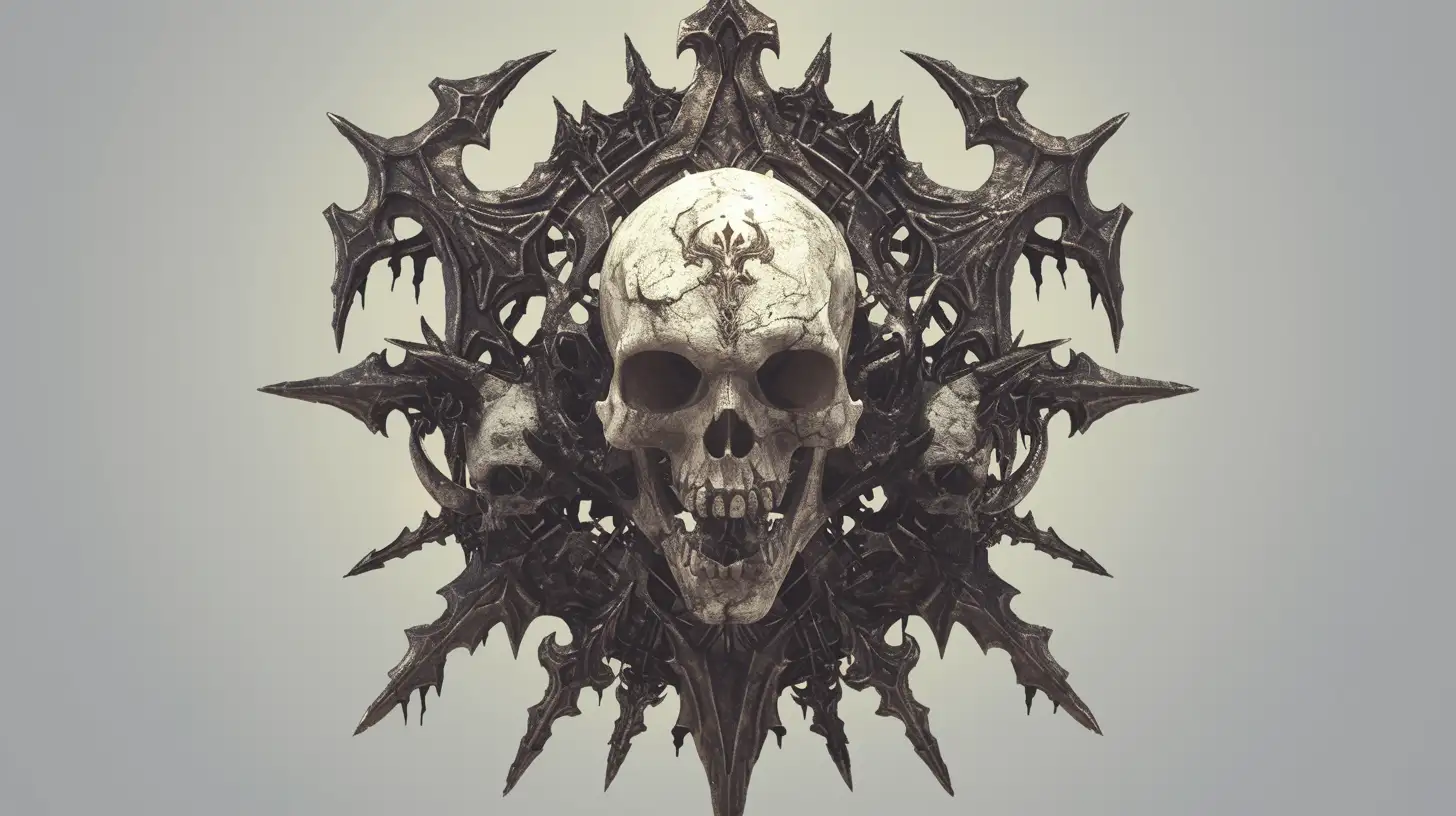
Crafting in Diablo IV
Diablo IV’s crafting system doesn’t really kick in until you start stacking legendaries. Once you’ve got a good piece, then you can start tweaking, upgrading, and mutating it into something truly nasty.
| Mechanic | Function | Notes |
| Legendary Aspects | Extract special effects from one legendary item and apply them to another | Expands your Codex of Power with more customization options |
| Affix Rerolling | Swap an unwanted stat for a new one | Limited retries before you’re stuck with RNG results |
| Tempering | Adds up to two new affixes to an item | Choose from categories like Offensive, Defensive, Utility, etc. – rerolls available |
| Masterworking | Gradually buffs item stats, with every fourth upgrade supercharging an affix | Feels like a mini slot machine—sometimes great, sometimes frustrating |
Blizzard has been tweaking this system with every patch, and at this point, it’s clear they want a balance between player control and just enough randomness to keep things spicy. You can customize a lot, but you still get those unpredictable moments where RNG throws a curveball—good or bad.
Crafting in Path of Exile 2
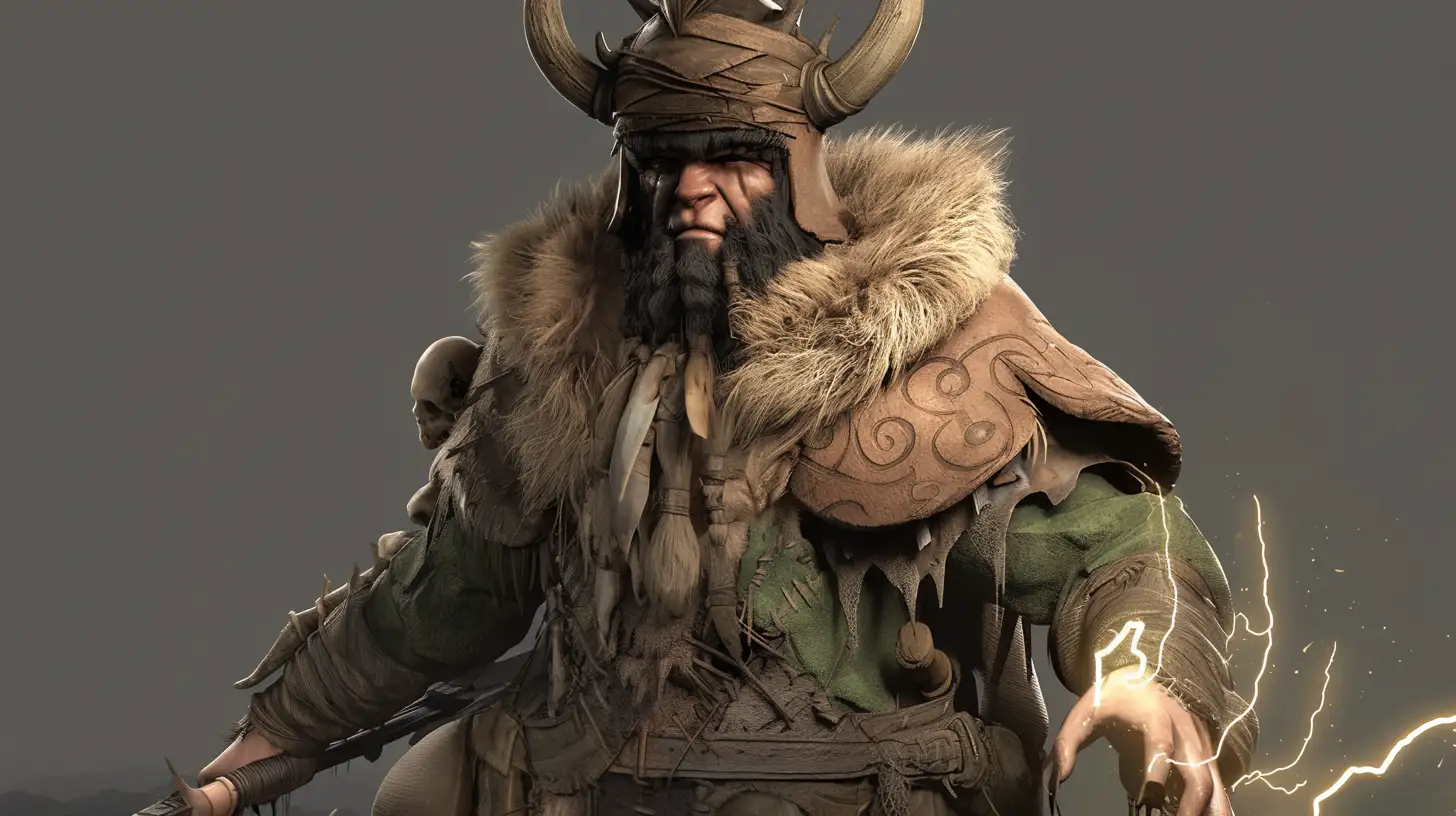
If Diablo IV’s crafting is about controlled progress, Path of Exile 2’s crafting is a high-stakes casino where you might walk away a god… or rage-quit and delete your character.
Here, crafting isn’t about simply upgrading items; it’s about shaping them through a sequence of risky steps, each with potential setbacks. You start with a white (normal) item and gradually evolve it into something powerful—or something utterly useless.
- Transmutation Orb → Turns a white item into a blue (magic) item with one affix. If you don’t like the affix, you scrap it and start over.
- Augmentation Orb → Adds a second affix to your blue item. If you like what you got, move on. If not, back to square one.
- Regal Orb → Upgrades your blue item to a yellow (rare) item, adding a third affix. Now, it’s getting serious.
- Exalted Orbs → Each one adds another affix to your rare item. This is where things get tense—you’re praying for the perfect rolls, but every addition could ruin the whole thing.
- Chaos Orb → Re-rolls all affixes randomly. This is the nuclear option—sometimes necessary, often heartbreaking.
- Quality Upgrades → Using items like Armourer’s Scrap or Blacksmith’s Whetstone, you can boost the item’s raw stats, similar to Diablo IV’s Masterworking, except without the lottery-like randomness.
Grinding Gear Games vs Blizzard
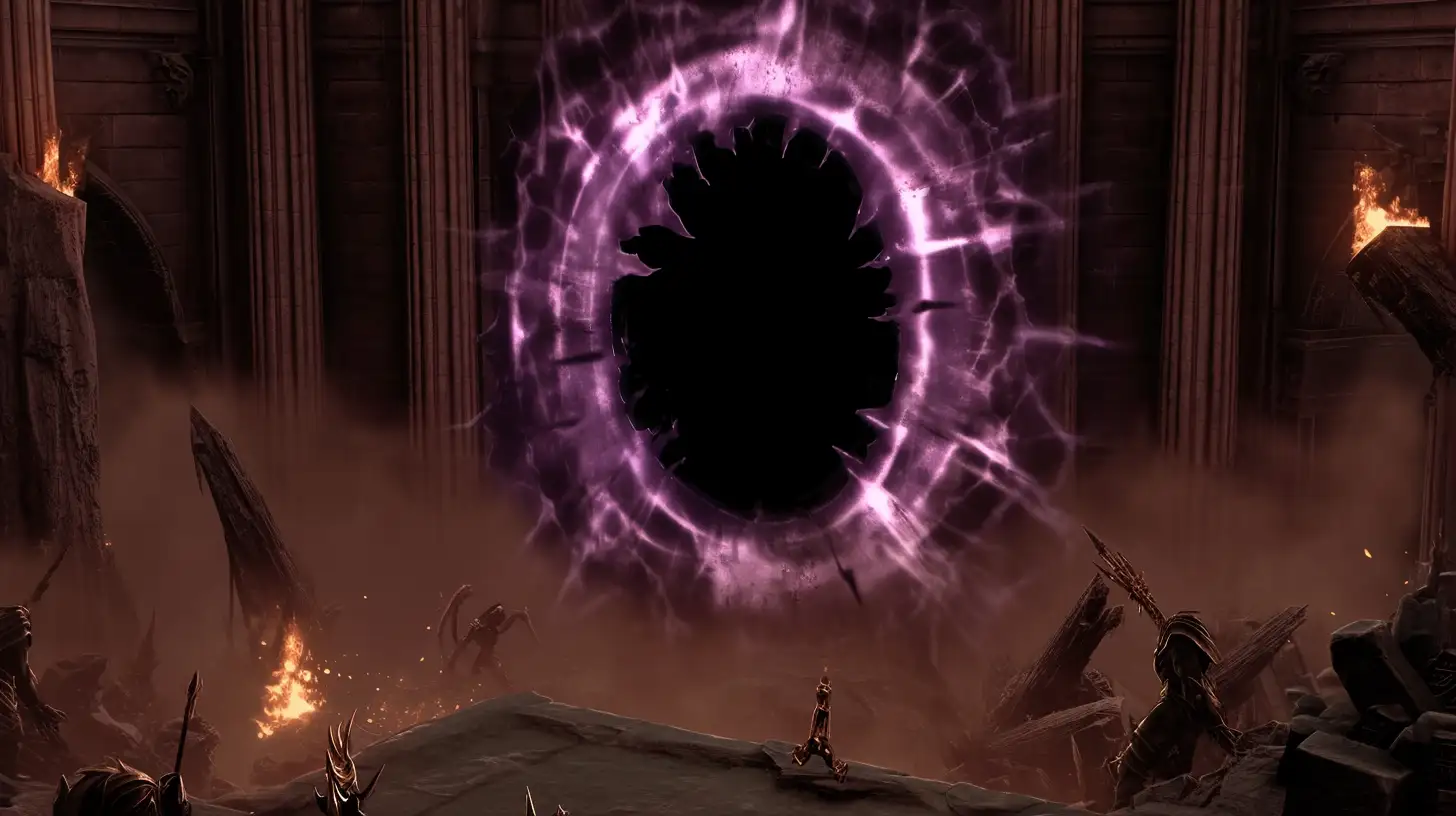
- Diablo IV is like a board game—you’re always moving forward, even if some steps are small. Every action has predictable progress.
- Path of Exile 2 is more like Snakes and Ladders—you might craft an insanely powerful item that defines your build… or one bad roll could send you tumbling back to nothing.
Whether you love or hate PoE2’s system comes down to how much randomness you can tolerate. Do you enjoy the thrill of gambling, or do you prefer steady, incremental upgrades? If you’re the kind of player who lives for that perfect roll, PoE2’s crafting will keep you hooked for hundreds of hours. If not, well… Diablo IV might be more your speed.
Leveling: Diablo 4 vs. Path of Exile 2
Both Diablo 4 and Path of Exile 2 have linear campaigns, but how they handle side content, difficulty scaling, and progression freedom is quite different.
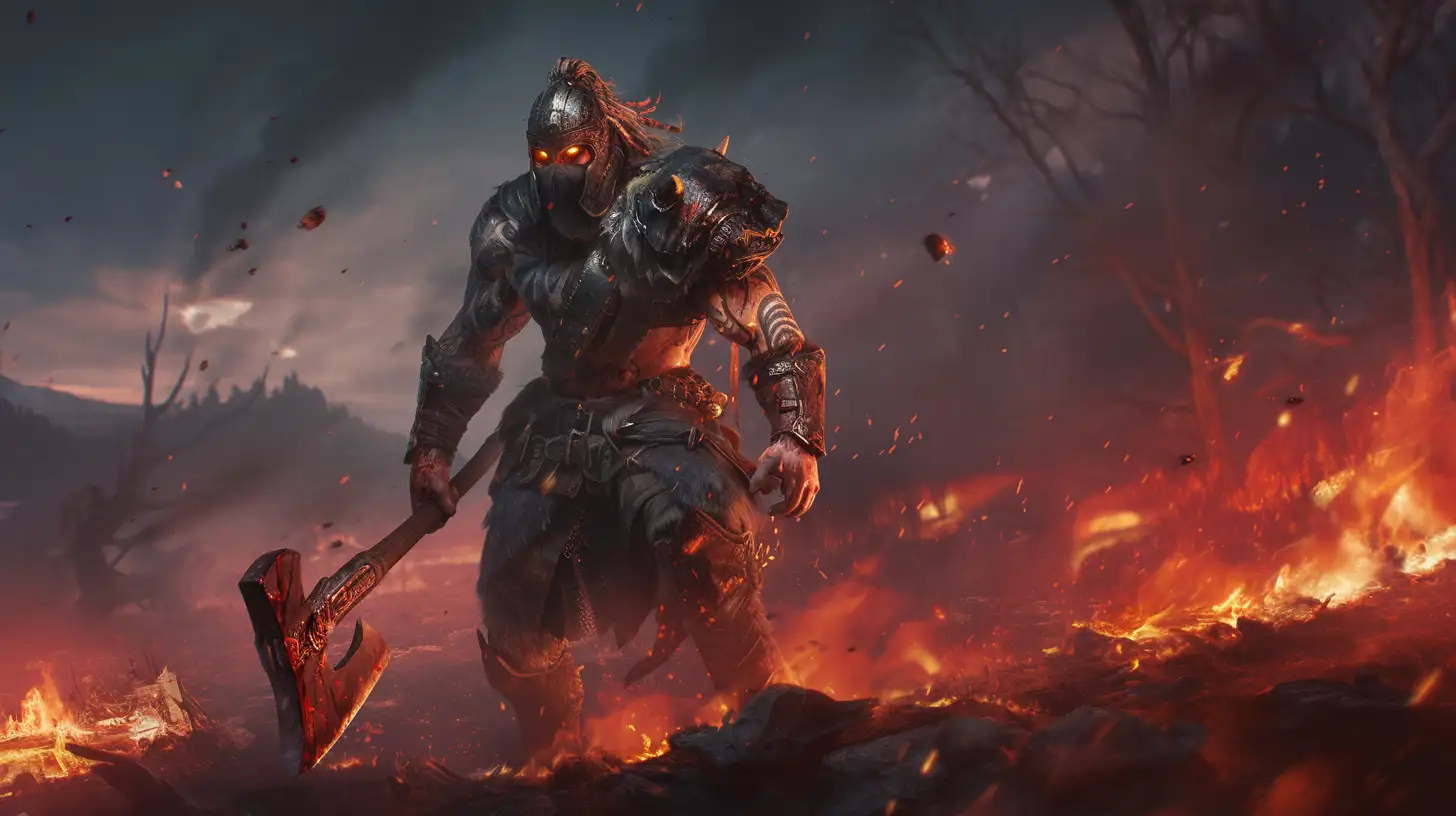
Diablo 4: An Open-World Approach
- Large open world filled with side quests, dynamic events (Helltides, Strongholds), and mini-dungeons.
- Players can take breaks from the main story, farming gear, or unlocking Codex of Power aspects to power up their builds.
- Multiple difficulty tiers (Torment and above unlock post-campaign).
- After completing the campaign once, you can skip it on future characters, making leveling much faster.
Path of Exile 2: Focused, But Grindier
- Leveling is tied to a linear campaign with some optional side objectives.
- If you hit a difficulty wall, you either replay maps you’ve cleared or grind mobs in the current area.
- Unlike D4, there’s no open world—you move from one area to the next.
- A unique mechanic: Mobs respawn when you die, allowing some creative farming (or frustration).
Backtracking: A Pain Point in Both Games

- Diablo 4 had too much backtracking in dungeons at launch, forcing players to retrace their steps for objectives. Blizzard fixed this by redesigning dungeon layouts, so objectives flow naturally.
- Path of Exile 2, ironically, makes D4’s original backtracking look mild—its campaign maps feel about 30% bigger than necessary.
- Grinding Gear Games added checkpoints to ease this, but their placement isn’t always ideal.
- The game seems to prioritize exploration over structured progression, so we might not see a full fix, but some rebalancing before launch is likely.
Which Leveling System is Better?
- If you like an open world with variety, where you can pick and choose how you level up → Diablo 4.
- If you prefer a focused campaign with deliberate challenge, and don’t mind grinding the same areas for power → Path of Exile 2.
D4 lets you skip the grind if you want. PoE2 makes you fight through it. Whether that’s fun or frustrating depends on your playstyle.
Punishing Mechanics: Diablo 4 vs. Path of Exile 2
A good death penalty can make combat feel more intense, but too much punishment can lead to frustration. Here’s how Diablo 4 and Path of Exile 2 handle it:

Diablo 4: Light Punishments
- Penalty: Gear loses durability → repairs cost gold.
- Gold becomes expensive in the late game, making repeated deaths costly.
- No XP loss or progress reset, so deaths are annoying but not devastating.
Verdict: D4’s system keeps tension without ruining progression.
Path of Exile 2: A Harsher Approach
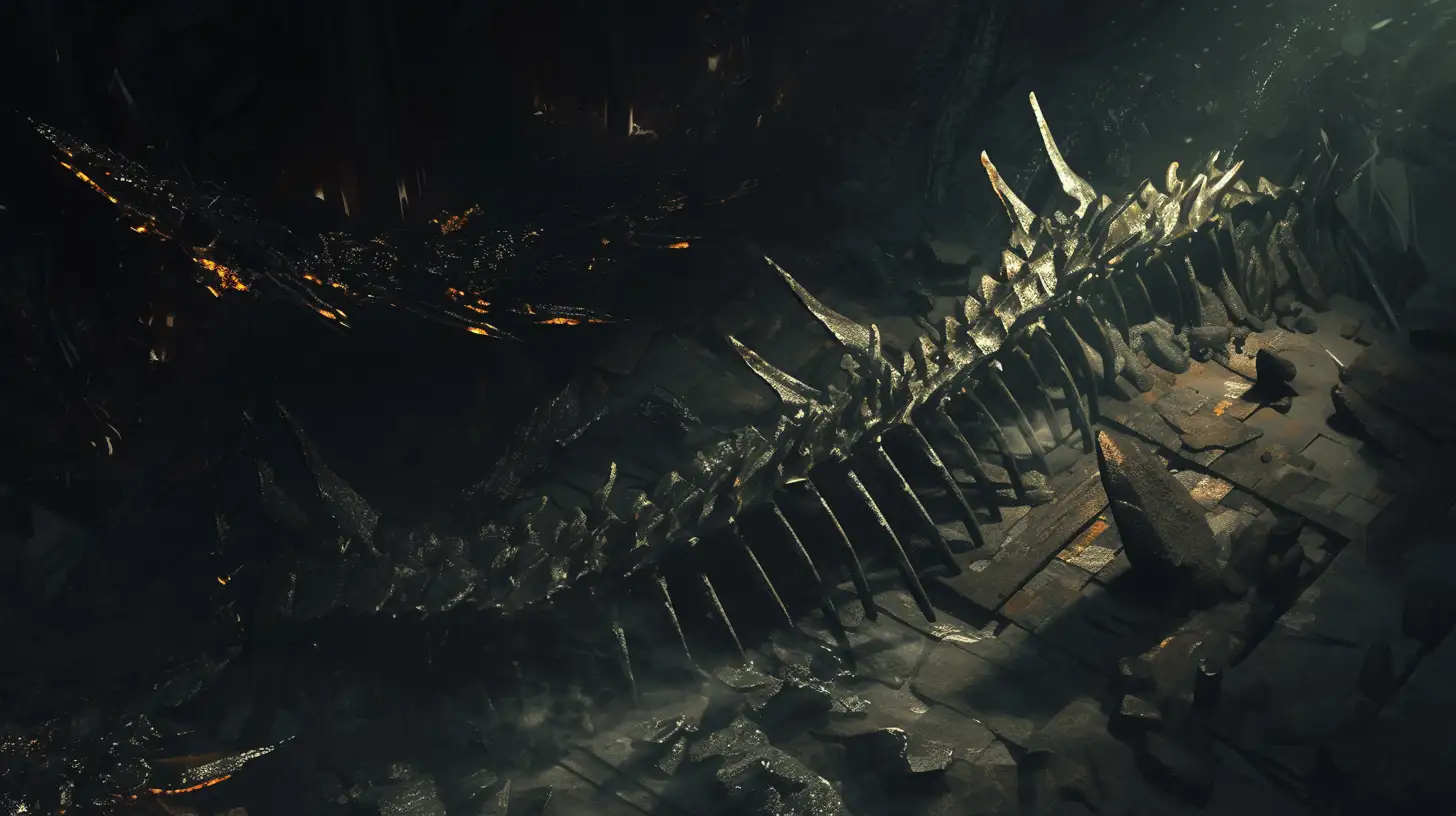
Pros & Cons of Resetting Mobs:
✔ Gives weaker players a chance to farm XP by dying and retrying.
✖ Annoying if you’re close to an objective and have to fight everything again.
✖ Imagine seeing a rare drop, dying, and losing it forever. At that point, some players might just stop playing.
Endgame Death Penalties: PoE2 is Brutal
Lose the entire map if you die (instead of respawning at a checkpoint).
Lose experience (an old-school mechanic from classic RPGs).
Community Backlash: Many players think it’s too punishing, so this might change before launch.
Which System is Better?

PoE2 rewards perseverance but can be frustrating. D4 is forgiving but still makes dying feel like a setback. Which do you prefer?
UI and User Experience
Let’s take a second to talk about UI and user experience. Not the flashiest topic, I know, but it says a lot about how these two games approach design.
Path of Exile 2 has a really solid built-in wiki—just hold Alt, and boom, instant explanations for whatever obscure term you’re wondering about. It also has a solid search function across menus, something Diablo 4 technically has too, but it’s a bit more… let’s say, basic.
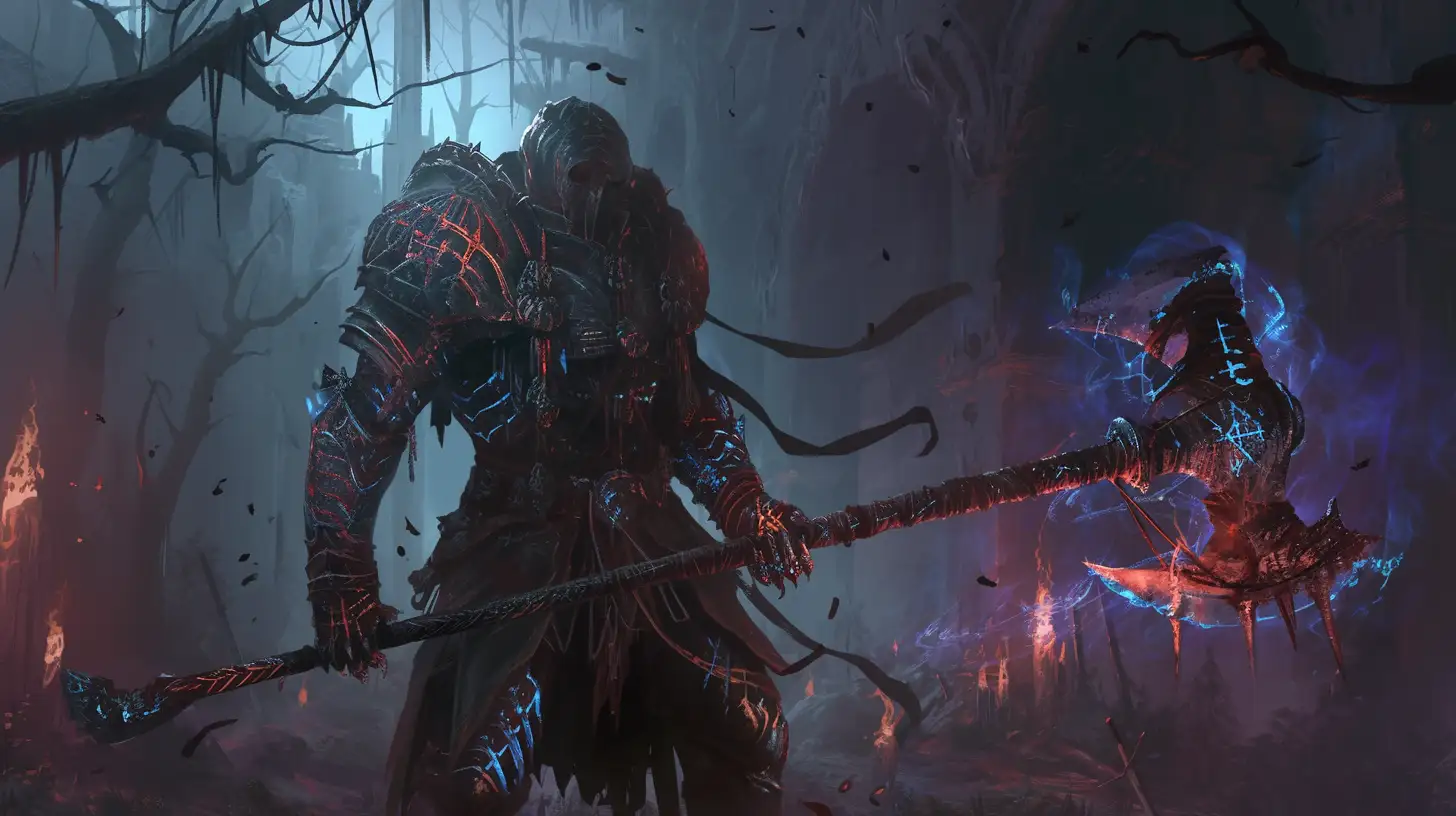
Now, when it comes to inventory management, Diablo 4 has definitely put effort into making life easier. PoE2, on the other hand, wants you to suffer—tons of items to juggle, and while you can buy extra stash tabs (yay, monetization!), you’re still stuck micromanaging your loot like a medieval accountant.
Diablo 4 just says, “Nah, we got this,” and throws everything into auto-sorted stockpiles. Gems? Automatically pulled when you need them. Crafting materials? Always there, no fuss. Oh, and a small but very nice touch—you can see item rarity at a glance instead of hovering over every single thing like in PoE2.
Plus, D4 lets you mark items as junk or important, and as of Season 7, there’s a whole wardrobe system where you can swap your entire build with a couple of clicks. If it wasn’t clear before, Blizzard really wants you to have a smoother ride.
PoE2, on the other hand, is still sticking to its “figure it out yourself” philosophy. It has some hidden shortcuts—like holding Shift to apply items multiple times or Ctrl to jump straight to a shop—but, of course, it doesn’t tell you about them. You either stumble upon these by accident or learn from a guide. That’s kind of PoE’s thing, though—less hand-holding, more “git gud” energy.
It all comes down to design philosophy: Diablo 4 wants you to play, Path of Exile 2 wants you to work for it. Which one is better? Well, that depends on whether you like your games helpful or hostile.
The Campaign Story

Diablo 4 is one of the rare ARPGs that actually makes you care about its story. It pulls you in hard right from the start with a strong narrative arc—at least for the original campaign.
Path of Exile 2, on the other hand, has potential, but it doesn’t quite hit in the same way—yet. It’s definitely an upgrade from the first game, especially around the end of Act 1, where the atmosphere and environmental storytelling start setting the stage. There’s this build-up, this creeping tension… but then Act 2 rolls around.
The whole looming Beast threat? Yeah, it’s there, but it doesn’t feel nearly as urgent or personal as Lilith in Diablo 4. Lilith makes sure you feel her presence right from the start. In PoE 2 layers may feel blocked by the slow story progression, and not fully invested in the encounter with the main enemy. That said, Acts 4, 5, and 6 are still coming, so there’s a chance PoE2 will tighten up its storytelling and deliver something truly gripping.
Group Finder: Diablo IV vs. Path of Exile 2 – Which One Makes Teaming Up Easier?
Playing solo is fun and all, but sometimes you need a crew—whether it’s to tackle tough bosses, farm loot, or just have someone to blame when things go south. Both Diablo IV: Vessel of Hatred and Path of Exile 2 offer party-finding tools, but they go about it in different ways. Let’s break it down.
| Feature | Diablo IV: Streamlined and Structured> | Path of Exile 2: More Options, More Chaos |
| Party Finder | Quick access via Shift + P (PC) or X/Square (console) | Browse or create parties with more settings and flexibility |
| Group Customization | Set activity type, player count, and goals | Adjust loot allocation, level scaling, and map portal access |
| Joining & Creating | Pick from predefined labels (grinding, learning, casual, etc.) | Open-ended party system with loot-sharing and scaling enemies |
| Teleporting | Use a Waypoint in major cities to instantly teleport to party members | Area access depends on individual story progress, which can limit grouping |
| Loot & Trading | Standard loot drops, individual loot rules | Loot is shared with a small delay for negotiation, quick right-click trading |
| Couch Co-op | Not available | Supports local co-op for two players on the same screen (controllers required) |
Looks and Art Design
Both games are modern, polished, and gritty—strip away the UI, and they might even look similar. But once the interface is in place, the differences stand out.
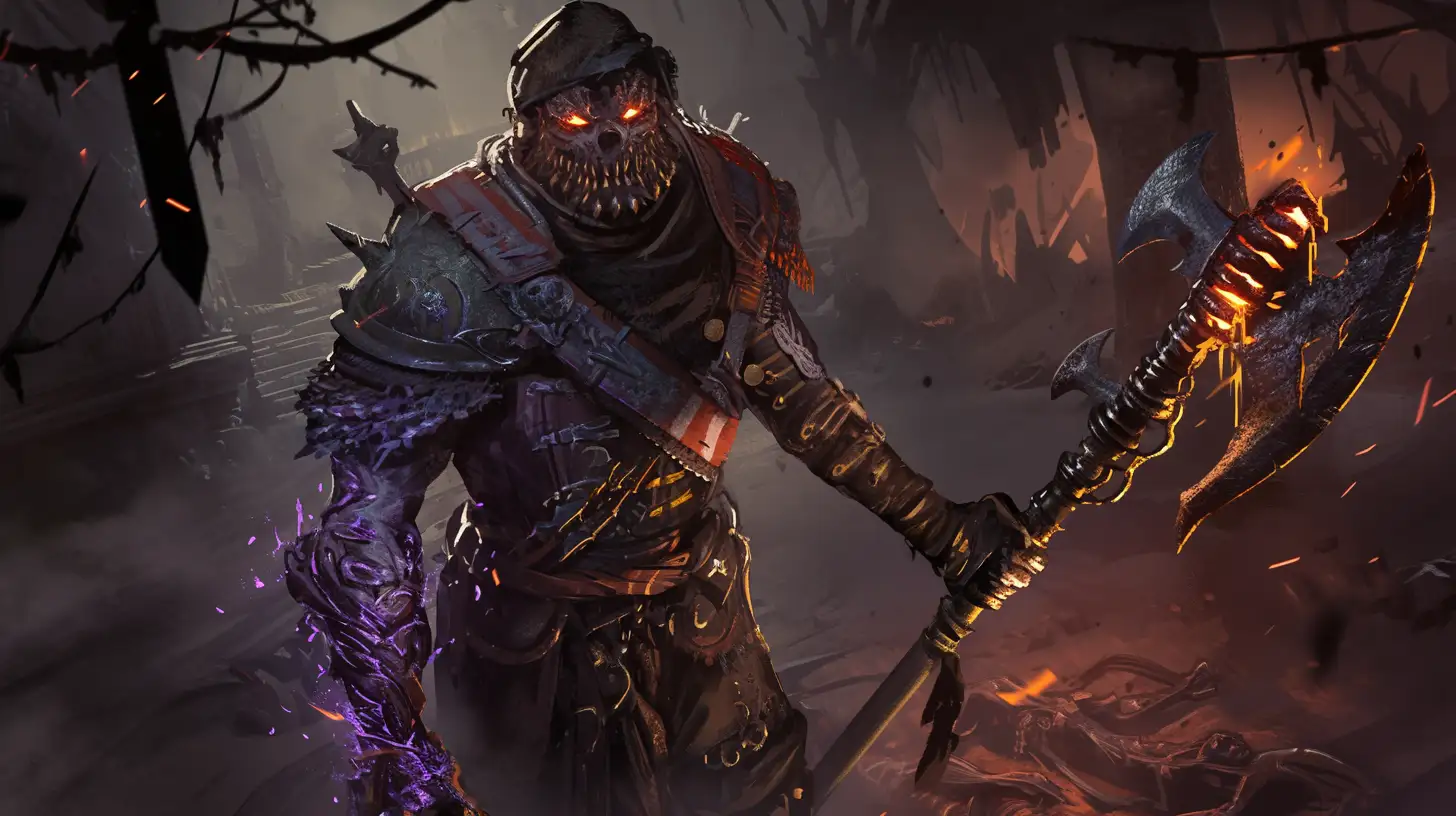
Diablo 4 goes for a high-contrast, saturated look—almost too colorful at times, giving it a slight mobile-game feel. It’s not ugly, just flashy.
PoE2, on the other hand, is darker yet more vibrant, with a sharper, more atmospheric presentation. Where Diablo 4 leans into muddy midtones, PoE2 keeps things crisp and immersive.
Which looks better? That’s subjective. Some prefer Diablo 4’s cinematic flair, while others favor PoE2’s grittier, grounded world.
Which Game is for You?
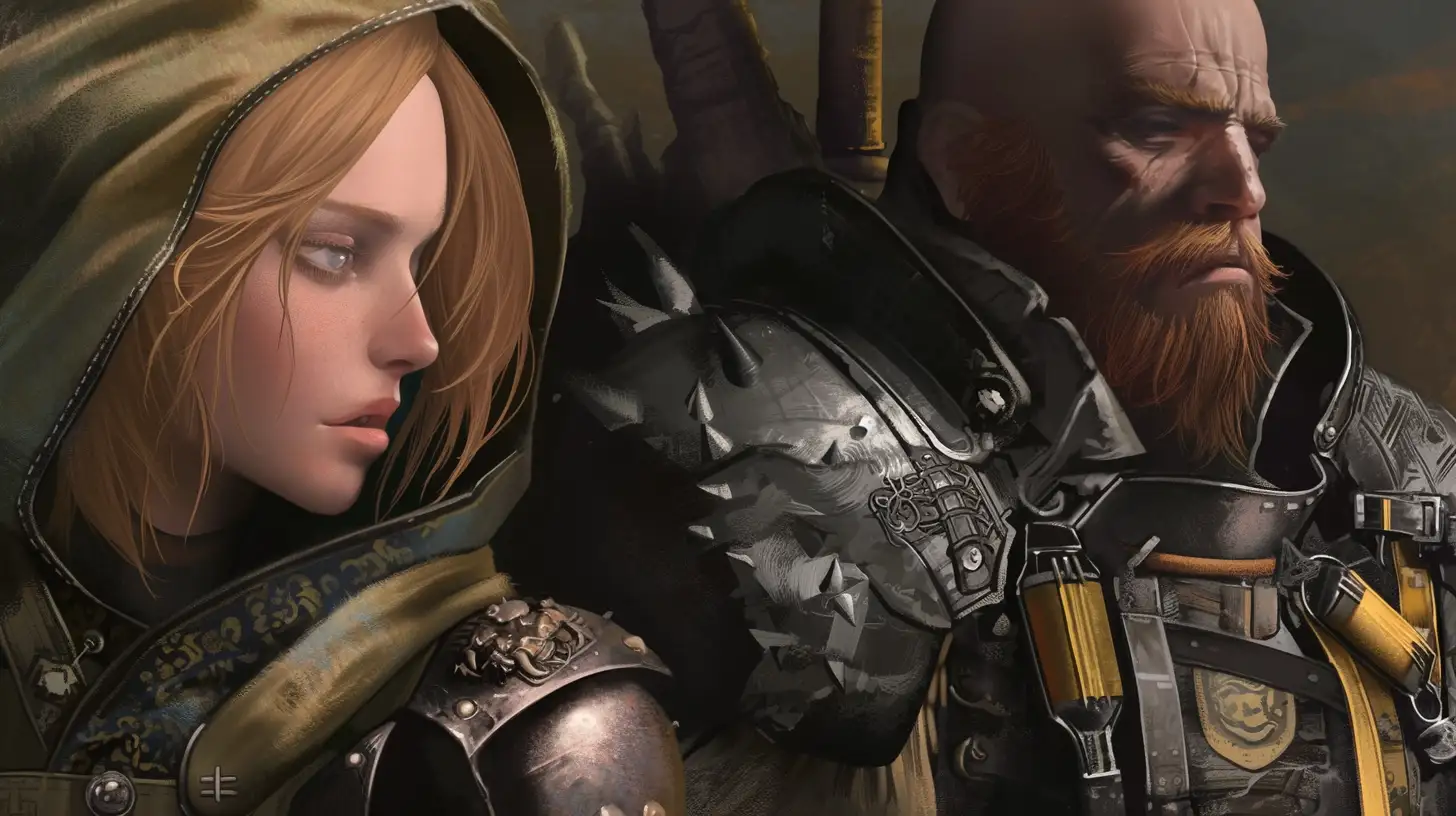
Both can be great entry points to ARPGs, but they scratch different itches.
- Diablo 4 offers a smooth, story-driven experience. It’s polished, immersive, and doesn’t require deep mechanical knowledge to enjoy. You can just play.
- Path of Exile 2 is for those who love deep customization, theorycrafting, and overcoming complexity. It’s unforgiving but rewarding for players who enjoy mastering intricate systems.
That said, Diablo 4 isn’t just casual fun—it has layers of depth, especially in endgame and seasonal mechanics. It may not reach PoE2’s level of complexity, but it’s far from mindless.
Both games will keep evolving, catering to their audiences. The choice comes down to whether you want to relax and enjoy the ride or dive deep into min-maxing every detail.
Frequently Asked Questions
How do the skill systems of Diablo IV and Path of Exile 2 differ?
While both games start with a basic skill set and unlock more as you progress, Path of Exile 2 offers significantly more flexibility. PoE2 allows players to mix and match skills from any class, limited only by attribute requirements, offering a vast array of build possibilities. Diablo IV, while also featuring a skill tree and Legendary Aspects for customization, remains more class-restricted. PoE2’s “Show Recommended” toggle reveals a hidden depth of support skills, showcasing the game’s expansive build potential.
What’s the deal with Path of Exile 2’s passive skill tree?
Path of Exile 2’s passive skill tree is notoriously complex, often described as a sprawling, interconnected web of upgrades. Unlike Diablo IV’s Paragon Boards, which are class-specific and introduced later, PoE2’s tree is one massive, unified system available from the start. It’s a “throw you in the deep end” approach, offering immense customization but also a steeper learning curve. Players who enjoy complex, interconnected systems will find it rewarding, while those preferring a more streamlined experience might find it overwhelming.
How does combat feel in both games?
Both Diablo IV and Path of Exile 2 deliver satisfying, weighty combat. They emphasize impactful animations, strong sound design, and responsive enemy reactions. However, PoE2 slows the pace slightly, making combat feel more tactical and deliberate. Diablo IV, while still weighty compared to many ARPGs, offers a faster, more fluid experience. Ultimately, the choice depends on whether you prefer a more deliberate, strategic fight or a quicker, more action-packed one.
How does the dodge roll mechanic compare between the two games?
Diablo IV uses a traditional dodge roll with cooldowns, potentially leading to frustrating moments when the dodge is unavailable during critical times. Path of Exile 2, however, ties the dodge roll directly to its animation, removing cooldowns. While this allows for more responsive movement, a slight slowdown after dodging prevents spamming. This provides a smoother, more intuitive experience, especially in high-pressure situations, making PoE2’s dodge roll more fluid and player-friendly.
What are the main differences in itemization?
Diablo IV simplifies itemization with its Item Power rating, making gear upgrades straightforward. Path of Exile 2, on the other hand, prioritizes trade-offs and build synergy. Instead of simple power increases, players must consider how stats and affixes interact with their builds. PoE2’s Item Levels are less about raw power and more about strategic choices, offering a deeper, more nuanced itemization experience for players who enjoy min-maxing and fine-tuning their builds.
How does crafting differ between Diablo IV and Path of Exile 2?
Diablo IV’s crafting system focuses on controlled progress, allowing players to tweak and upgrade legendary items with a mix of player control and randomness. Path of Exile 2’s crafting is more akin to a high-stakes gamble, involving a series of risky steps to evolve items, with potential for both great rewards and devastating setbacks. PoE2’s system is less predictable, offering a high-risk, high-reward experience for players who enjoy the thrill of chance.
Which game has the better leveling experience?
Diablo IV offers an open-world approach with diverse side content and flexible progression, allowing players to choose their leveling path. Path of Exile 2 features a focused, linear campaign with deliberate challenges, requiring players to grind through specific areas. Diablo IV’s system allows for skipping the campaign on subsequent characters, making leveling faster, while PoE2 forces players to engage with its campaign. The choice depends on whether you prefer open-world freedom or a structured, challenging campaign.
How do death penalties differ between the games?
Diablo IV features light death penalties, with gear losing durability and repairs costing gold. Path of Exile 2 employs harsher penalties, including mob respawns, item loss, and map loss in endgame, making mistakes more punishing. Diablo IV’s system maintains tension without being overly frustrating, while PoE2’s system emphasizes high-risk, high-reward gameplay.
How do the UI and user experience compare?
Diablo IV prioritizes user-friendliness with auto-sorted stockpiles, clear item rarity indicators, and a wardrobe system for easy build swapping. Path of Exile 2 adopts a “figure it out yourself” approach, offering a built-in wiki and hidden shortcuts but requiring players to learn through trial and error or guides. Diablo IV aims for a smoother, more accessible experience, while PoE2 caters to players who enjoy a more hands-on, discovery-driven approach.
Which game has the better campaign story?
Diablo IV delivers a strong, engaging narrative from the start, drawing players into its world and characters. Path of Exile 2, while showing potential, particularly in its environmental storytelling, doesn’t quite match the same level of urgency and personal connection. Diablo IV’s story is more immediately compelling, while PoE2’s story is still developing, with the potential to improve in later acts.
